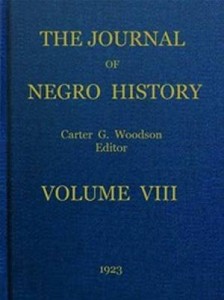Slavery in the United States was abolished by force of circumstances. The appeal to arms in April, 1861, was made by the North for the purpose of saving the Union, but only within a few months after the breaking out of hostilities "what shall we do with the slaves within our lines" was the cry heard from all sections of the invaded territory. Deserted by their masters or endeavoring to obtain freedom, the Negroes came into the Union camps in such large numbers that humanitarian as well as military reasons demanded that something be done to change their status and alleviate their physical suffering.[2] In the absence[Pg 2] of a uniform national policy on the matter, the several commanding generals settled the question according to their own notions. Butler, at Fortress Monroe, for example, refused to return the group of fugitive slaves and cleverly styled them "contraband of war." [Pg 3] It was under these circumstances that voluntary benevolent associations or freedmen's aid societies sprang up in quick succession all over the North as agencies first to relieve physical suffering and finally to administer to the religious and educational needs of the blacks and white refugees. Missionary efforts were rapidly pushed by them to all Confederate States just as fast as the Union armies advanced into the invaded territory. These private philanthropic efforts which began in 1861 finally led toward the close of the war to the establishment by the United States Government of the Bureau of Refugees, Freedmen and Abandoned Lands?an agency which carried on the work already begun by the societies and at the same time cooperated with them until changed conditions were reached about 1870. The military event in South Carolina which called forth immediate relief was the capture of Hilton Head and the adjacent sea islands on November 7, 1861, by Commodore Dupont and General T. W. Sherman.[3] The agencies formed to succor the blacks on these islands were the New England Freedmen's Aid Society, the New York National Freedmen's Relief Association, and the Pennsylvania Freedmen's Relief Association. These several bodies were non-sectarian in character. Cooperating with them were some regular church organizations. At some time during the seven years existence of the Freedmen's Bureau it embraced a six-fold program: (1) distributing rations and medical supplies; (2) establishing schools and aiding benevolent associations; (3) regulating labor contracts; (4) taking charge of confiscated lands; (5) administering justice in cases where blacks were concerned,[Pg 4] and (6) the payment of bounties to soldiers. The societies likewise exercised various physical functions, but it is only the educational activities of all parties concerned that are of primary interest here. The chosen period of ten years, 1862-1872, represents a rise and fall. During the war the non-sectarian societies operated with all the vigor that the military situation would permit. At its close in 1865 and lasting through 1866 their greatest efforts were expended. Beginning about 1867, signs of retrenchment appear; and in 1868 their operations practically cease. At the same time, both as a cause and as a result of the dissolution of the non-sectarian societies, the church organizations took up the work and carried it not only until the end of this decade but down to the present time. The Freedmen's Bureau, as guardian over all, had no funds the first year or two, but in 1867 and especially in 1868 and 1869 when the societies weakened, it did its greatest work. After 1870 the Freedmen's Bureau had but a nominal existence. By Congressional action the institution expired in 1872. With this ending and one or two important developments by the church organizations in 1871 and 1872, this essay likewise closes. This educational campaign is thus one conducted by outside parties. The several organizations adopted the policy of "no distinction on account of race or color"; but, inasmuch as the schools were conducted primarily for the blacks, these ten years represent an effort for this race with automatically very little attention to the native whites. The subject, then, lends itself to the following organization: The Port Royal Experiment, the organization and relationship, the establishment and work of schools, the difficulties and complications, and self-help and labor among the freedmen.
Journal of negro history, volume 8, 1923, the
Sobre
Talvez você seja redirecionado para outro site












